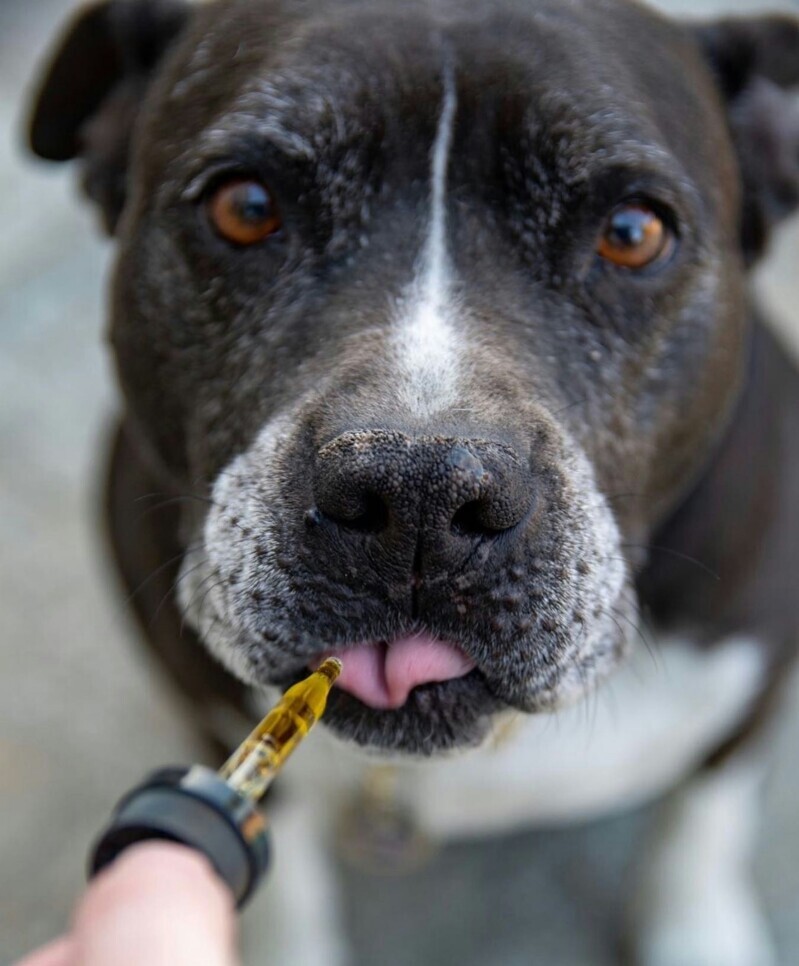
A few of the links in this post are affiliate links. If you buy something, we may earn a small commission (no extra bones from your wallet 🐾). Thanks for helping support the site and all of the dog adventures!
Ever had that feeling that something’s just off with your dog? Like they’re not acting their usual tail-wagging self? Recognizing when something’s amiss is all about being tuned in to their behavior. And if they ate something that’s not good for them, you need to be acutely aware of their condition. We’re here to help you figure out if your dog ate something it shouldn’t have and how to handle the situation.
Maybe they’re ignoring their favorite toy or sleepily lounging around when they’re usually bouncing off the walls. If they’re giving you those sad puppy eyes or you notice they’re super restless, these might be signs of distress or discomfort. This is a sign to start paying attention to their behavior.
Changes in your dog’s behavior could be triggered by something they’ve eaten. A strange new food, something they snuck off the counter, or that curious munch on the yard could turn the day upside down. It’s tough to keep an eye on them 24/7, so it’s possible they snagged something when you weren’t looking.
Not every bad mood points to a serious issue, though. Maybe they just need their regular walk or a break from the summer heat. But if they keep acting funky or you’re seeing stuff like vomiting or diarrhea, then that’s a red flag that something more serious may be at hand.
It’s all about knowing your dog’s usual habits and quirks. By understanding their behavior on a normal day, you’ll pick up on any weirdness quick, helping you decide if it’s a minor issue or the start of something more serious. Sometimes they may feel funny for a bit and then go back to normal, but it is when they don’t seem to be improving that you really need to pay attention.
Not sure what your dog can and can’t eat? Get the full list in Safe and Unsafe Human Foods for Dogs.

Identifying Symptoms of Toxic Ingestion
Spotting symptoms after your dog eats something dodgy can save them a lot of trouble. Keeping a keen eye out for the tell-tale signs could mean the difference between a rough day and a trip to the vet.
Common signs something’s wrong include vomiting and diarrhea, often the first indicators that something isn’t sitting well in their tummy. If these happen more often than usual or seem more intense, it’s time to be on high alert.
Watch for excessive drooling, which might suggest they ate something particularly nasty. Lethargy or sudden loss of interest in food can also be clues something’s not right. These are telltale signs that their body is rejecting something they put in their belly.
Certain toxins can have specific symptoms. Chocolate, for instance, can cause hyperactivity, increased heart rate, or even seizures in dogs. Household cleaners may lead to respiratory issues or severe stomach upset.
Keep these signs in mind and you’ll be better prepared to catch any potential nausea-inducing snafus in your dog’s diet before they become critical. It’s important to tell the difference between a simple stomach ache or something that might need more intense and immediate care.
If your dog skips meals after eating something questionable, find solutions in What to Do if Your Dog Won’t Eat.

Deciphering the Causes: What Did Your Dog Eat?
When your dog’s feeling off, figuring out what they munched on is like playing detective. Start by ruling out the usual suspects, like foods or items they had access to. Look for any clues around that might help you figure out what they ate.
Take a look around where they usually hang out. Did they sneak a bite of chocolate from a kitchen counter? Maybe they noshed on some grapes or onions left on the table. Many everyday foods are toxic to dogs, so being aware of potential hazards is key. And knowing what they ate might help you determine how to respond.
Don’t forget about the hidden dangers outside. Often during walks or playtimes, dogs might explore the yard or garden, nibbling on plants like lilies or azaleas, which can be harmful. Your pup could have chewed on something bad outside when you weren’t looking, so also be aware of anything in your yard that may be potentially toxic.
Environmental factors like open trash bins or stray items picked up during a walk could also be culprits. If your dog took a solo excursion into areas they usually can’t reach, it might be time to puppy-proof the space to prevent future accidents.
Knowing what’s dangerous helps you eliminate potential hazards and keeps you one step ahead in pinpointing what might’ve caused your dog’s current condition. Nothing works better than prevention, so keep your home and yard clear of toxic substances that your dog could get into.
If your pup is prone to tummy issues, check out Best Foods for Dogs With Sensitive Stomachs.

First Response: Immediate Actions to Take
When your dog seems to have eaten something they shouldn’t, quick action is key. Start by assessing their symptoms and level of distress. If they’re vomiting or showing other immediate symptoms, try to keep them calm and hydrated if they are able to drink.
Avoid inducing vomiting unless specifically directed by a vet, as it might do more harm than good depending on what they’ve ingested. Instead, remove any remaining harmful substances they might still have access to and keep them away from tempting trash or food sources.
Create a safe and monitored environment. Confine them to a specific area where you can watch them closely for any changes in behavior or symptoms. This makes it easier to track any developments without additional stress. Keep them in a space where you can watch them and they can be comfortable.
Reaching out to a vet is crucial. A quick phone call to describe the symptoms and situation can provide you with essential guidance on next steps. Have any relevant information ready, like what your dog might have eaten and how long ago. This could help determine the course of action.
It’s important to stay calm. Your dog often takes cues from you, so maintaining a relaxed posture helps keep them calm too. By taking these first steps, you set the stage for effective management and ensure a more informed response from professionals.
Strong digestion helps dogs bounce back faster. Find tips in How to Improve Your Dog’s Gut Health.

Veterinary Intervention: When to Seek Professional Help
When your dog’s showing serious symptoms, deciding to call in the vet could be a lifesaver. Severe vomiting, bloody diarrhea, or persistent lethargy might be your cue to head for emergency care. Unexpected symptoms like seizures or collapse mean immediate action is necessary.
For less obvious cases, where symptoms are present but not drastically severe, consulting with your vet remains crucial. Describing the exact symptoms and any potential ingested items helps them form a clearer picture and guide you on whether an in-person visit is needed. It’s possible they may have an internal issue that a professional would need to deal with.
Remember, small incidences, like chewing something mildly irritating with no major symptoms, might be manageable with home remedies only if your vet gives it the green light. Not every belly ache is a matter of life and death. Still, it’s better to err on the side of caution when uncertain about the severity.
Post-incident, following vet recommendations for recovery is essential. This could mean dietary restrictions or medication to aid in recovery. Being vigilant during the recovery phase is crucial for ensuring no relapse or further issues occur.
By knowing when and how to seek professional help, you ensure your dog gets the best possible care and increases the chances of a fast and smooth recovery. So keep any dangerous items out of their reach, and have a plan for what to do when your dog is having an emergency. This way you’ll always be prepared for those times when your pup gets a little too curious.
